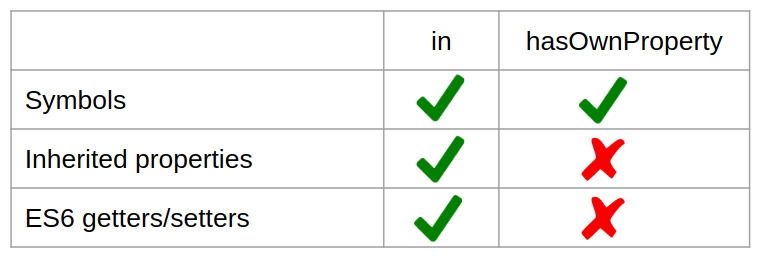deepmerge源码 🔗 最近在看webpack-chain源码的时候,看到内部在合并webpack配置的时候使用的是deepmerge这个第三方库,看了一下源码一共一百来行,简单学习一下
https://github.com/TehShrike/deepmerge
使用 🔗 主要功能就是实现两个对象的合并,通key的情况下会进行合并
1
2
3
4
5
6
7
8
9
10
11
12
13
14
15
16
17
18
19
20
21
22
23
24
25
26
27
28
29
30
31
32
33
34
35
36
37
const x = {
foo : { bar : 3 },
array : [{
does : 'work' ,
too : [ 1 , 2 , 3 ]
}]
}
const y = {
foo : { baz : 4 },
quux : 5 ,
array : [{
does : 'work' ,
too : [ 4 , 5 , 6 ]
}, {
really : 'yes'
}]
}
const output = {
foo : {
bar : 3 ,
baz : 4
},
array : [{
does : 'work' ,
too : [ 1 , 2 , 3 ]
}, {
does : 'work' ,
too : [ 4 , 5 , 6 ]
}, {
really : 'yes'
}],
quux : 5
}
merge ( x , y ) // => output
源码 🔗 1
2
3
4
5
6
7
8
9
10
11
12
13
14
15
16
17
18
19
20
21
22
23
function deepmerge ( target , source , options ) {
options = options || {}
options . arrayMerge = options . arrayMerge || defaultArrayMerge
options . isMergeableObject = options . isMergeableObject || defaultIsMergeableObject
// cloneUnlessOtherwiseSpecified is added to `options` so that custom arrayMerge()
// implementations can use it. The caller may not replace it.
options . cloneUnlessOtherwiseSpecified = cloneUnlessOtherwiseSpecified
// 源对象和目标对象是否是数组
var sourceIsArray = Array . isArray ( source )
var targetIsArray = Array . isArray ( target )
// 是否是相同类型
var sourceAndTargetTypesMatch = sourceIsArray === targetIsArray
// 不同类型时
if ( ! sourceAndTargetTypesMatch ) {
return cloneUnlessOtherwiseSpecified ( source , options )
} else if ( sourceIsArray ) { // 同为数组
return options . arrayMerge ( target , source , options )
} else { // 同为非数组对象
return mergeObject ( target , source , options )
}
}
cloneUnlessOtherwiseSpecified 🔗 是否克隆出一个新对象,默认行为是进行克隆, 最终还是都的deepmerge主函数
1
2
3
4
5
function cloneUnlessOtherwiseSpecified ( value , options ) {
return ( options . clone !== false && options . isMergeableObject ( value ))
? deepmerge ( emptyTarget ( value ), value , options )
: value
}
defaultArrayMerge 🔗 默认同为数组时进行合并的逻辑
1
2
3
4
5
function defaultArrayMerge ( target , source , options ) {
return target . concat ( source ). map ( function ( element ) {
return cloneUnlessOtherwiseSpecified ( element , options )
})
}
利用数组concat返回一个新元素的情况,并且遍历数组元素进行创建新元素
mergeObject 🔗 合并对象的主逻辑
1
2
3
4
5
6
7
8
9
10
11
12
13
14
15
16
17
18
19
20
function mergeObject ( target , source , options ) {
var destination = {}
if ( options . isMergeableObject ( target )) {
getKeys ( target ). forEach ( function ( key ) {
destination [ key ] = cloneUnlessOtherwiseSpecified ( target [ key ], options )
})
}
getKeys ( source ). forEach ( function ( key ) {
if ( propertyIsUnsafe ( target , key )) {
return
}
if ( propertyIsOnObject ( target , key ) && options . isMergeableObject ( source [ key ])) {
destination [ key ] = getMergeFunction ( key , options )( target [ key ], source [ key ], options )
} else {
destination [ key ] = cloneUnlessOtherwiseSpecified ( source [ key ], options )
}
})
return destination
}
其中getKeys实现比较有意思
1
Object . keys ( target ). concat ( getEnumerableOwnPropertySymbols ( target ))
首先使用Object.keys获取到对象可枚举属性组成的数组
再使用Object.getOwnPropertySymbols拿到对象上所有Symbol属性的数组
这里就比较严谨了,兼融了对象上的可以访问的属性
创建一个新的空对象 遍历目标对象,把目标对象上的属性进行复制 遍历源对象如果目标对象上有对应的同属性,进行复制合并 没有的话进行创建新的值 笔记 🔗 in和hasOwnProperty区别都可以用来对象内是否含有对应属性 都支持判断ES6内的symbols 不同点就是in可以判断出原型链上通过继承过来的属性, hasOwnProperty只能判断对象上自己拥有的属性 1
2
3
4
5
6
7
8
9
10
11
12
13
14
15
16
17
18
19
20
21
22
23
24
25
26
27
28
29
30
31
32
33
34
35
36
37
38
39
40
41
42
43
44
45
46
const obj = { answer : 42 };
// 基础属性判断
'answer' in obj ; // true
obj . hasOwnProperty ( 'answer' ); // true
'does not exist' in obj ; // false
obj . hasOwnProperty ( 'does not exist' ); // false
// symbol对象判断
const symbol = Symbol ( 'answer' );
const obj = { [ symbol ] : 42 };
symbol in obj ; // true
obj . hasOwnProperty ( symbol ); // true
// 继承属性判断
'constructor' in obj ; // true
'__proto__' in obj ; // true
'hasOwnProperty' in obj ; // true
obj . hasOwnProperty ( 'constructor' ); // false
obj . hasOwnProperty ( '__proto__' ); // false
obj . hasOwnProperty ( 'hasOwnProperty' ); // false
class BaseClass {
get baseProp () {
return 42 ;
}
}
class ChildClass extends BaseClass {
get childProp () {
return 42 ;
}
}
const base = new BaseClass ();
const child = new ChildClass ();
// 对于es6中 getters/setters判断
'baseProp' in base ; // true
'childProp' in child ; // true
'baseProp' in child ; // true
base . hasOwnProperty ( 'baseProp' ); // false
child . hasOwnProperty ( 'childProp' ); // false
child . hasOwnProperty ( 'baseProp' ); // false
